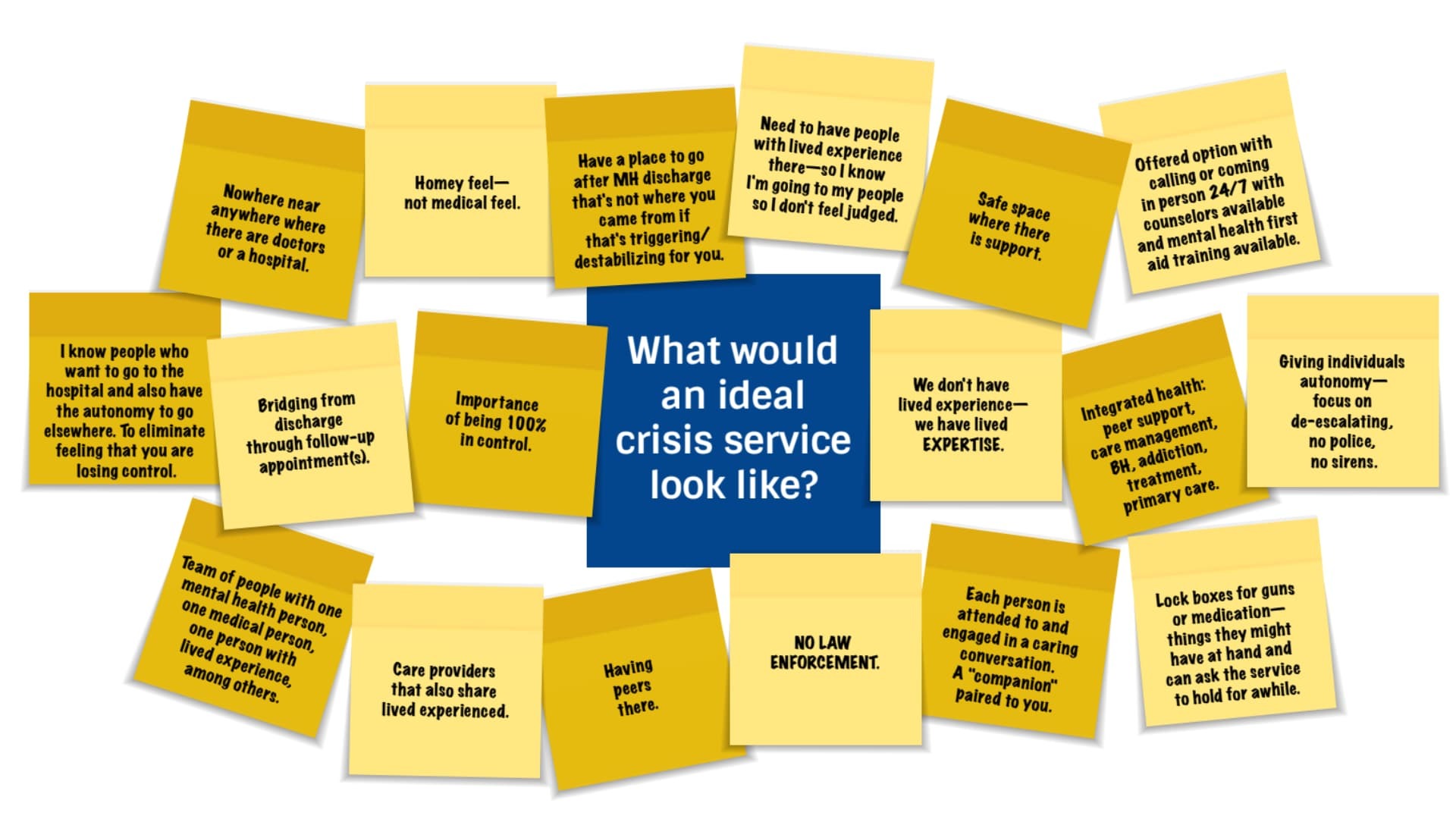Safe Spaces for U.S. Communities

Key features of Safe Spaces:
- Run by peers with lived experiences of suicide
- Located in accessible residential or storefront areas
- No healthcare interventions or involuntary hospital referrals
- Potentially impactful in rural communities with limited services
Needs and Feasibility Assessment
Methodology:
- Surveys, listening sessions, interviews, and document reviews
- Engaged people with lived experience, healthcare providers, community members, and legal/policy experts
Objectives:
- Explore the needs, perspectives, and feasibility of establishing Safe Spaces in the U.S.
- Inform future research, design, and piloting work
In partnership with:

This project was made possible through collaboration with the following organizations:

This HRSA RCORP RCOE program is supported by the Health Resources & Services Administration (HRSA) of the US Department of Health & Human Services (HHS) as part of an award of $3.33M in the current year, with 0% financed with non-governmental sources.
The contents are those of the author(s) and do not necessarily represent the official views of, nor an endorsement by HRSA, HHS or the US Government.
Listening Session Participant
Exploring Alternatives in Crisis Support
The 988 Suicide and Crisis Line, launched in 2022, improved access to the National Suicide Prevention Line. However, local support options remain limited.
Challenges with Emergency Departments (EDs)
- EDs lack specialized settings for mental health crises.
- "Psychiatric boarding" can be expensive and traumatic.
- Rural areas have limited access to specialized mental health services.
- Traditional ED responses may increase distress
Crisis Stabilization Centers (CSCs)
- Over 600 CSCs operate across the US.
- Designed specifically for mental health crises.
- More suitable environment and cost-effective care.
- Mostly located near urban centers.
- Although peers are involved and more recovery-oriented, the medical model exerts a strong influence.
Community-Led Safe Spaces
The University of Rochester Medicine Recovery Center of Excellence on SUD Prevention and SafeSide Prevention explored an alternative inspired by the introduction of Community-Led Safe Spaces by Roses in the Ocean in Australia. These are:
- Run by peers with lived experiences of suicide
- Located in residential or storefront areas
- Potentially impactful in rural communities.
This project goes beyond simply importing foreign models but rather a collaborative approach to addressing universal human needs for respect, connection, and contribution within specific cultural and systemic contexts.
Listening Session Participant
Summary of key findings of our study:
- Potential guests and their families seek non-judgmental, validating support in a welcoming environment with relatable staff, a sense of community, and separation from clinical procedures.
- Rural community members value Safe Spaces as an additional crisis support resource, emphasizing local partnerships and education while noting accessibility and anonymity challenges.
- Healthcare providers recognize the potential benefits of Safe Spaces while expressing concerns about risk management, coordination with clinical services, and adequate training for peer staff.
- Key legal and policy considerations include addressing licensure requirements, liability protection, funding mechanisms, and maintaining Safe Spaces' community-rooted ethos while ensuring legitimacy and appropriate oversight.
Individual with lived experience
